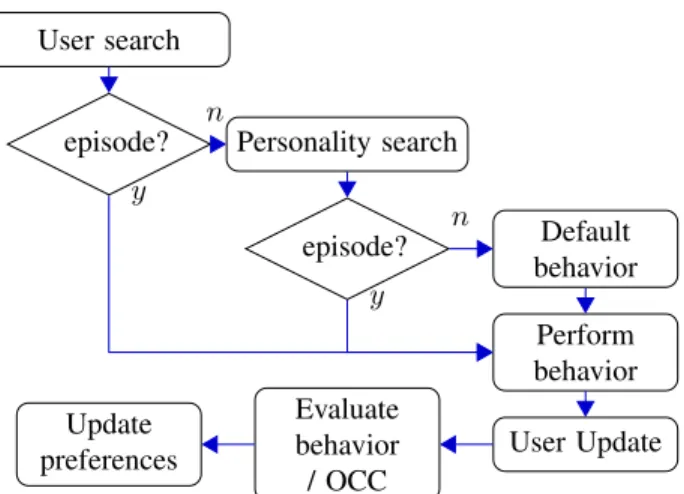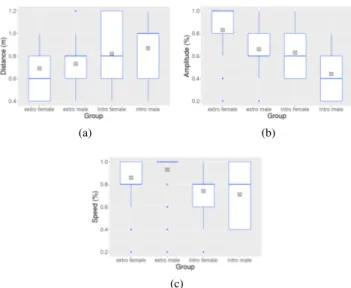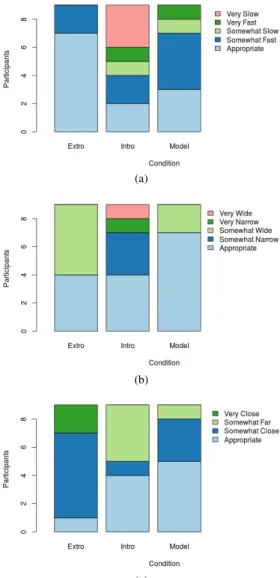Learning Users' and Personality-Gender Preferences in Close Human-Robot Interaction
Texte intégral
Figure




Documents relatifs
Second, as for topic B1 the highest level of agreement be- tween the assessor and the users is on the end points of the relevance scale: E3S3 (43%) and E0S0 (58%), although the
I will describe the personality typology systems currently in use (MBTI, Big Five, Enneagram), the features and methods proposed for assigning personality, and the current state of
In conclusion, there are several interesting findings from this experiment: 1) Students’ sense of community is sig- nificantly positively correlated with their satisfaction
In this paper, we present a fast and efficient solution for channel width selection and channel assignment in 802.11 WLANs using channel bonding.. The proposed algorithm uses a
To effectively learn to imitate posture (see Figure 1) and recognize the identity of individuals, we employed a neural network architecture based on a sensory-motor association
`aggressive behavior and especially that of individuals with learning difficulties' in Greece. There is lack of a polymorphic scientific analysis on the issue of
Across traditional bullying (both direct and indirect forms) and cyberbullying (through mobile phones and the internet), the most commonly reported victim emotion was anger (Ortega
The influence of personality traits on the verbal and non verbal production constitutes a big step towards generating appropriate robot behavior matching human’s personality within

